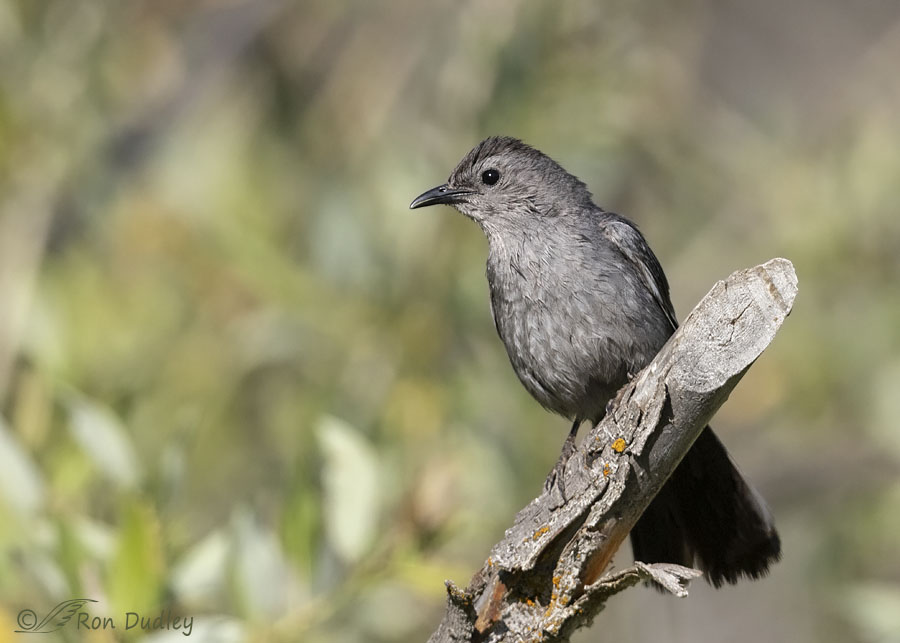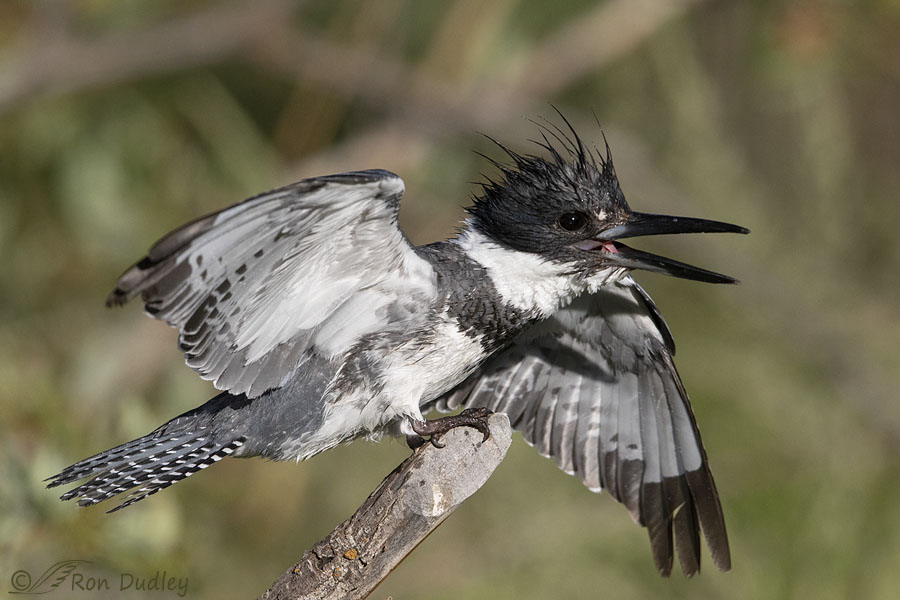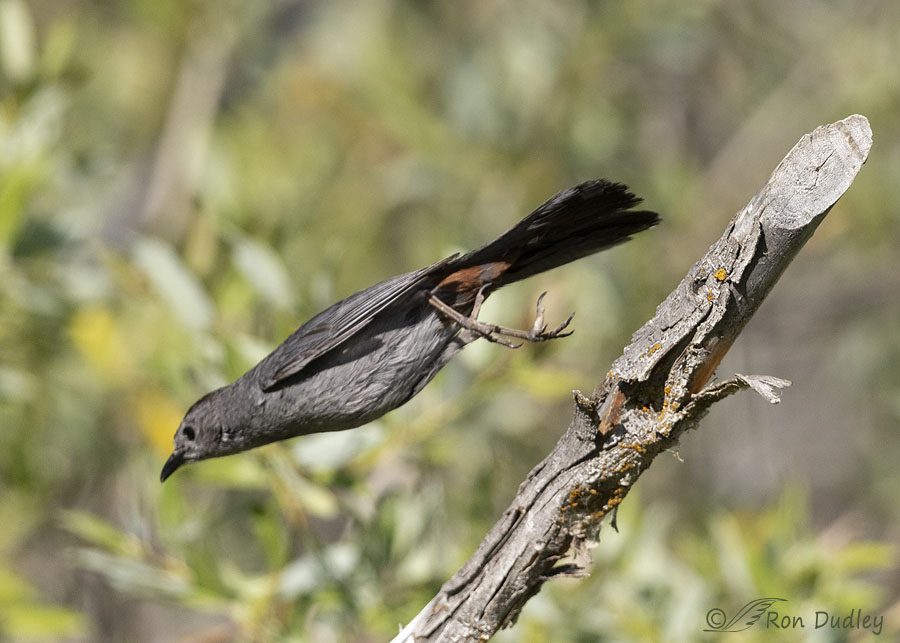Until yesterday morning my attempts at quality catbird photos this year had been jinxed.

1/8000, f/5.6, ISO 1600, Canon R5, Canon EF500mm f/4L IS II USM + 1.4 tc, not baited, set up or called in
While I was attempting to photograph mostly warblers in willows near a mountain stream this Gray Catbird came from out of nowhere and landed out in the open and reasonably close to me. ‘He’ only gave me time for a quick burst before he was gone so I didn’t have time to adjust my camera settings but I think things still worked out pretty well.
Although it would have been nice to have had enough depth of field to get his tail sharp. Or sharper.

If the perch looks familiar it’s because I’ve posted photos of kingfishers and a few other birds on this same cut branch. It sure looks different now.
It goes without saying that I was hoping for quality takeoff and flight shots if and when the catbird took off.

1/8000, f/5.6, ISO 1600, Canon R5, Canon EF500mm f/4L IS II USM + 1.4 tc, not baited, set up or called in
But that didn’t work out. When he left his perch he dove downward at a steep angle and slightly away from me without opening his wings, causing me to lose sharp focus on his head and not giving me light in his eye. One of the few upsides to the photo is the look it gives us of some of the rusty-red undertail coverts of catbirds that can be so difficult to see.
Which is the main reason I decided to include it in today’s post.
Ron


Lol. I didn’t read carefully and thought ,”that second shot is a kingfisher…where’s the real Ron Dudley?”
Arwen, I screw up routinely but that would have been a big one, even for me.
I never knew about that bit of color. Thank you.
You’re welcome, Cheryl. Lots of folks are unaware of it.
A subtle charmer. And of course with ‘cat’ in their name, they do delight in being contrary and mocking you from a safe and hidden vantage point…
Excellent point about cats, EC!
The Bird in the Gray Feathered Suit — he’s rather non-descript, but for that fine wash of darker gray in his cap. Still, a handsome fella, and I’m glad you’ve finally got a few more photos to scratch that itch.
Chris, it was an itch made more compelling because catbirds, with those calls of theirs, always seemed to be mocking me because I couldn’t get any decent shots of them.
It was good to see you yesterday. Shooting was complicated for me with the clouds drifting over the sun now and then. I have a few of a catbird too. I have not processed them. I had most fun with the hummingbirds on the Russian thistle. I am really liking the R5. Did you see the Kingfisher at the second location we passed each other?
April, I didn’t see the kingfisher but I heard it as I drove back past where you were parked down below.
The clouds messed me up too, especially for one series with a perched kingbird. When it took off I didn’t have enough shutter speed because of the clouds, even though I’d bumped my ISO up considerably.
Did you buy the EF-RF adapter ring with the control on it? I think I might put my ISO on it for fast changes, I bump the ring often while hand holding so I will have to pay closer attention to the settings. Right now I have my EV on the control.
Yes, I bought one with the control ring, just so I’d have an additional option.
Don’t have any gray catbirds in SoCal. Like the photo; the nearly parallel positioning of the branch and the bird give a extra sense of motion.
Thanks, Michael. Yeah, that combination seems to give him more speed. Not that he needed it – he was almost too quick for me as it was.
The perch doesn’t look like it has aged a day to me.
Nice take off shot. Looks like he’s expertly calibrated his wing spread for the flight logistics: wind speed, gravity, velocity, angle of descent, and destination. What comes naturally to him takes our species countless engineers, billions of dollars and huge consumption of fossil fuels.
Lyle, I’d add at the end of your comment – “Even then we often get it wrong”.
I have never seen a Gray Catbird, at least that I am aware of. For Prescott they are show as “accidental” meaning less than 5 sighted annually.
Love the Kingfisher though. We only have them in the winter here. When summer comes they are long gone.
All nice shots.
Thanks, Everett. The first catbird I ever noticed was in Montana. At the time I didn’t even know we had them down here in Utah.
First time ever, we have one nesting in our yard. And that is awesome!
Awesome indeed, Connie. Congrats.
They DO have quite the vocabulary! We have a few around this year tho mostly heard and not seen. Both shots are appealing for different reasons. It is nice to see the rusty-red even if the head isn’t sharp. Nice Kingfisher too!
Nice Kingfisher too!
Going to be in the high 90’s this next week – UGH! Creek is dropping fast.
Judi, “mostly heard and not seen” is their modus operandi, which is the main reason I’ve had so little success with them this year.
Oh I have a wonderful cat bird that comes each year and nests in front of my house boy do they have a lot to say during the day. Fascinating.
” boy do they have a lot to say during the day”
They sure do. And they have a lot of different ways of saying it.
I like how accepting Catbirds are of other bird species. One of their traits I enjoy anyhow among the many.
I’ve never noticed that William, but now that you mention it I think you’re right. Although, and not surprisingly, they can be pretty aggressive toward other catbirds.